In the pantheon of foreshadowing phrases, nestled between “hold my beer” and “watch this” sits “how hard could it be?” While there’s no way of verifying whether this sequence of words ever came up during the development of the Pontiac G6 Convertible, I’d like to imagine that someone at Pontiac took a look at the hardtop convertibles coming out of Europe and thought something to that effect. It looked pretty sharp by the standards of the day and was cheap for a four-seat hardtop convertible, but behind the scenes, there were allegedly some moderate calamities.
America’s first taste of GM’s Epsilon platform was the Saab 9-3, and that was quite good. Granted, Swedish engineers had reworked so much that the 9-3 got unique suspension arms, engine management, and cabin electronics from other U.S.-market Epsilon platform cars, so people were in for a bit of a shock when the 2004 Chevrolet Malibu hit the scene. This was a car that, at best, was usable as a transportation device. From its soulless Fisher Price-reject interior to its milquetoast styling to its overboosted steering, it sent a message: “So, you couldn’t afford an Altima?” From Scandinavian sensibility to a machine seemingly designed to put middle managers with company cars in their place, the Epsilon platform certainly had range. Now GM just needed to fill in the middle.
The first sign of life on that front came from Pontiac with its replacement for the Grand Am, the Oprah-famous G6. Worlds away from the dowdy Malibu, the G6 had smart, rakish styling, a cabin that didn’t look bargain-bin, and nifty available features like a multi-panel retractable panoramic moonroof. Launched as a sedan, a coupe would soon follow, and Pontiac even made the promise of a convertible for serious sun-seekers.

While the Saab 9-3 already offered a convertible variant with a soft roof, Pontiac decided to take a different approach. A longer wheelbase than the 9-3 meant that a new mechanism was required, and since the hot thing to have in the 2000s was a power-retractable hardtop, GM contracted out. Development was supposed to be a joint venture between Karmann Technical Developments, the American arm of the firm that built and lent its name to the Volkswagen Karmann Ghia, and American Sunroof Corporation. Early production was expected to get up and moving late in the third quarter of 2005, but that didn’t happen. Instead, not only did the joint venture fall apart, causing Karmann to pick up the pieces left behind by ASC, but production was pushed back from September 2005 to early 2006. As Autoweek reported in January 2005:
“Initially, it was supposed to start in September,” says Pat Sweeney, president of UAW Local 5960 at GM’s Orion Township, Mich., assembly plant, where the G6 is built. “But that was pushed back a few months until sometime in January.”
Sweeney declined to discuss what caused the delay. A supplier familiar with the project says GM is having trouble building a retractable hardtop on a unibody vehicle.
This seems like an unusual reasoning, given that roof assembly production seemed to have gone to a firm with huge convertible experience, but there were a few mitigating factors. After all, Karmann’s experience with large retractable hardtops hadn’t quite yet extended to its American subsidiary, and GM was still responsible for bodywork, interior revisions, and ultimate assembly. Indeed, later in 2005, Autoweek reported that production had been pushed back again, allegedly due to failed durability testing and questionable assembly.
The top is supposed to survive two life cycles of openings and closings, for a total of 16,000 to 20,000 cycles, supplier sources say. But a supplier close to the program says the roof has failed after fewer than 10,000 cycles.
A poor fit between the deck lid and rear fenders is another problem, the source says.
Those are some fairly serious allegations, so how did General Motors respond?
GM spokesman Jim Hopson said the convertible’s top “meets and exceeds” all of the automaker’s current life-cycle requirements, but declined to say what those requirements are.
“I’ve never been involved in a vehicle program that didn’t have some problems,” he says. “Our intention, at this point, is to have the vehicle available in the first quarter of 2006.”
Ah yes, nothing says everything’s fine quite like “I’ve never been involved in a vehicle program that didn’t have some problems.” Still, production did come online during the first half of 2006, and while examples of the G6 Convertible started shipping, they weren’t without their faults.
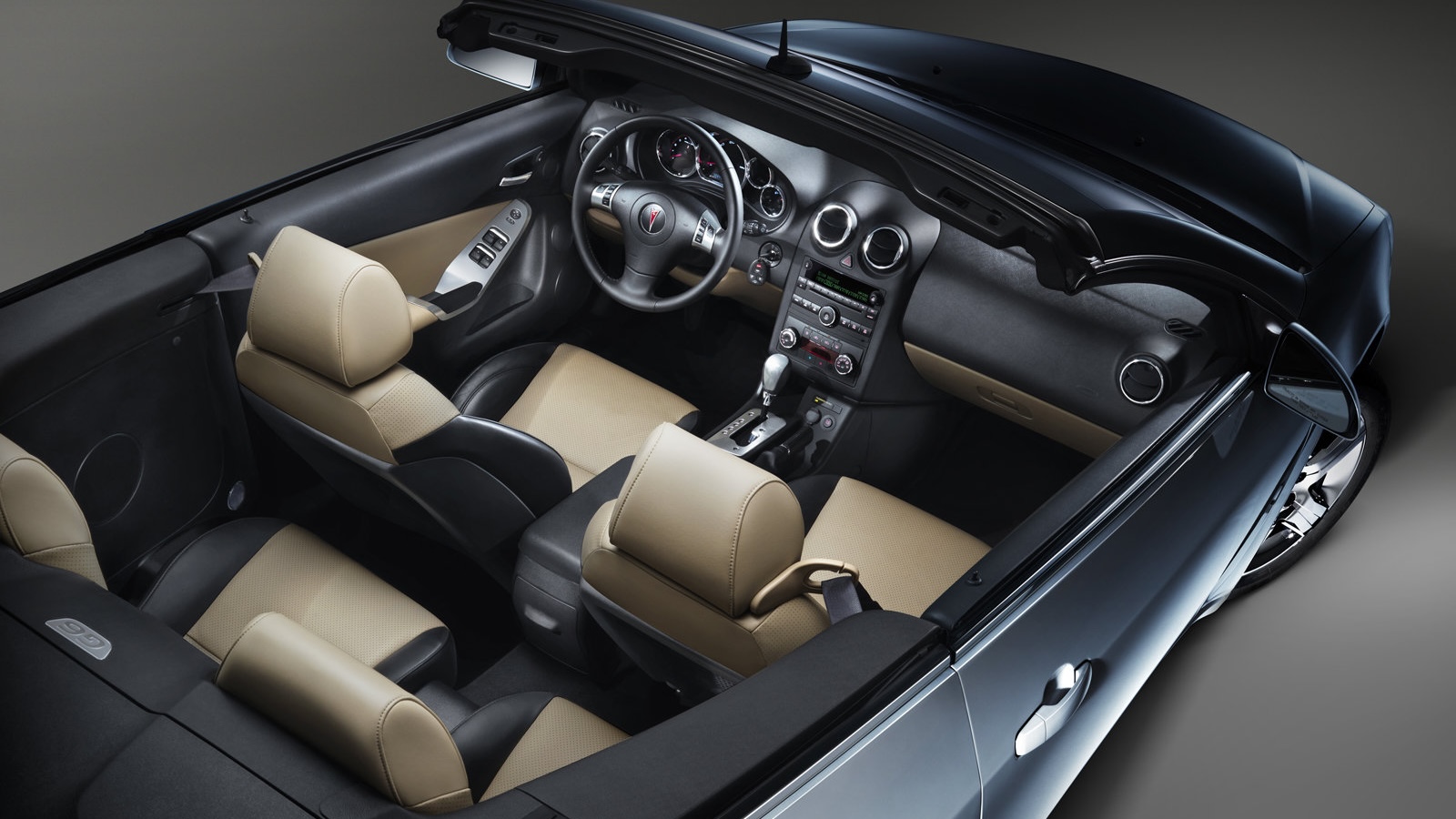
When you think about it, a unibody car is basically a big cereal box. Stable and sturdy, up until a critical point. Cut one side out of the cereal box, however, and things get bendy. Convertible variants of closed-roof cars often require substantial modifications to restore composure lost to the removed roof. To that end, the G6 Convertible not only gained structural bracing, it also got a unique suspension package to cope with the extra weight and twist of the drop-top treatment. Unfortunately, measures like these could only do so much. Motor Trend noted that “With the roof up, the car is acceptably rigid and remarkably quiet, but with the top down, the G6’s body loosens up considerably.” That’s not good, and Consumer Reports agreed, writing:
The Pontiac G6 convertible is mediocre at best. The retractable hard top rattles and exposed wires in the trunk make the car look unfinished.
Not exactly high praise, and to make matters worse, Autoweek went even further, writing:
We noted considerable wiggle and jiggle in our testing, and Pontiac’s own figures support our findings. Pontiac’s testing shows the G6 with the top down is only marginally better in torsional rigidity, and is worse in bending stiffness, compared to a similarly priced ragtop competitor with the top down. Once the solid roof clicks into place, wind and road noise are more isolated than in a comparable soft-top convertible, but rigidity improves only slightly.
That translates into noticeable squeaks from the hardtop—the kind that would drive us crazy over time, even in a convertible. But to be fair, we tend to notice those little noises more than most; owners of traditional cloth-top convertibles will likely find the silence beneath the closed roof satisfying.
Right, flexy and squeaky. What else? Well, there was the packaging and operation of the folding roof itself. While raising the deck lid by fewer than two inches compared to the coupe preserved the G6’s lines, it did make for miserly trunk space with the roof stowed. In an August 2007 comparison test against the Chrysler Sebring Convertible and the Ford Mustang Convertible, Car and Driver noted that the G6 Convertible offered a mere two cubic feet of trunk space with the top down. The magazine also wrote that the roof itself took a whopping 34 seconds to retract and 30 seconds to deploy, respectively 22 seconds and 18 seconds longer than the textile roof on a Mustang Convertible.
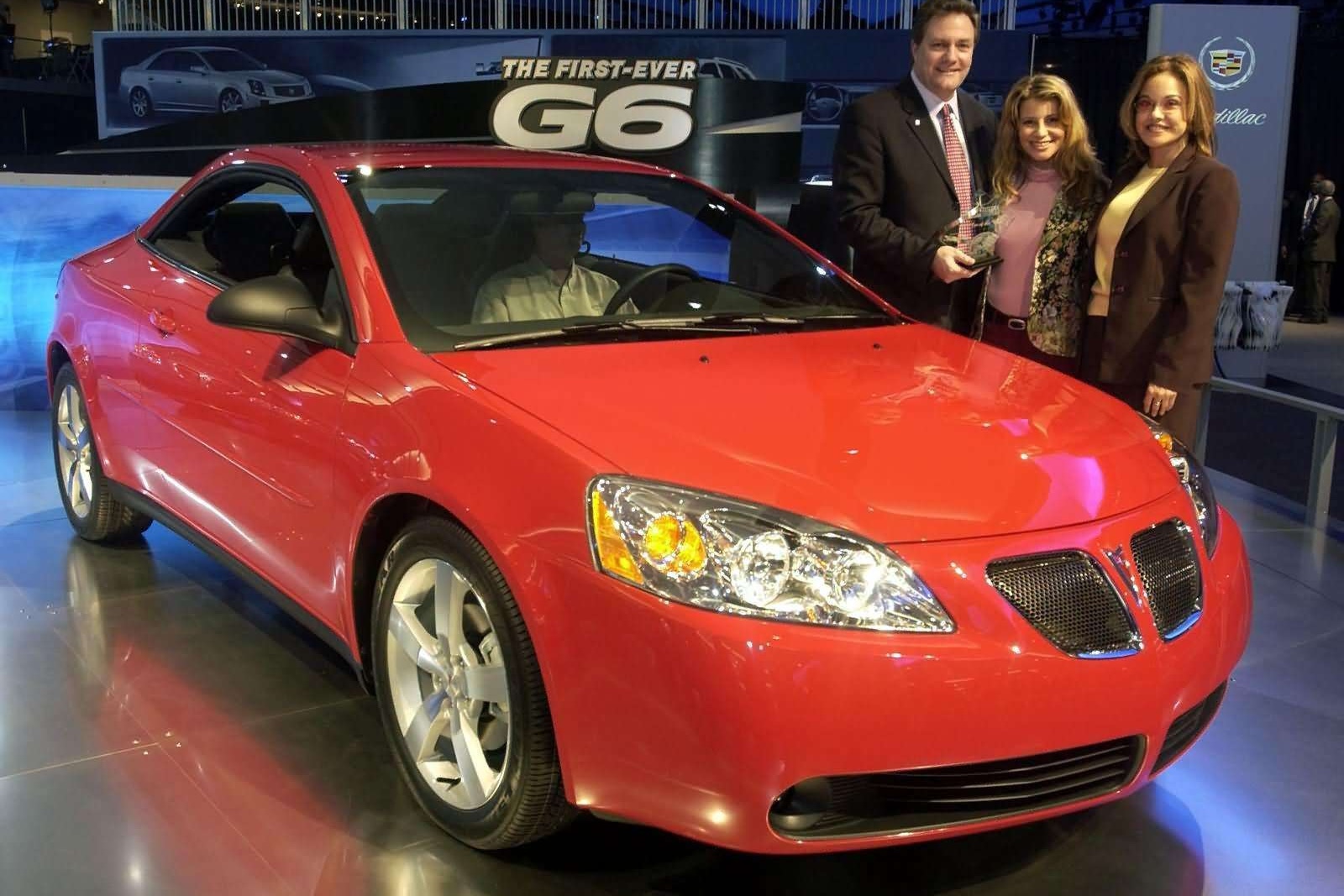
Despite these substantial setbacks, the Pontiac G6 Convertible was relatively well-received, if largely due to the tepidness of the segment. The third-generation Chrysler Sebring Convertible didn’t have any virtues worth writing home about, and the V6 Ford Mustang Convertible of the time was a dog with its own cowl-shake issues. It also helped that the drop-top G6 technically started under $30,000, certainly not an enormous sum for a hardtop convertible.
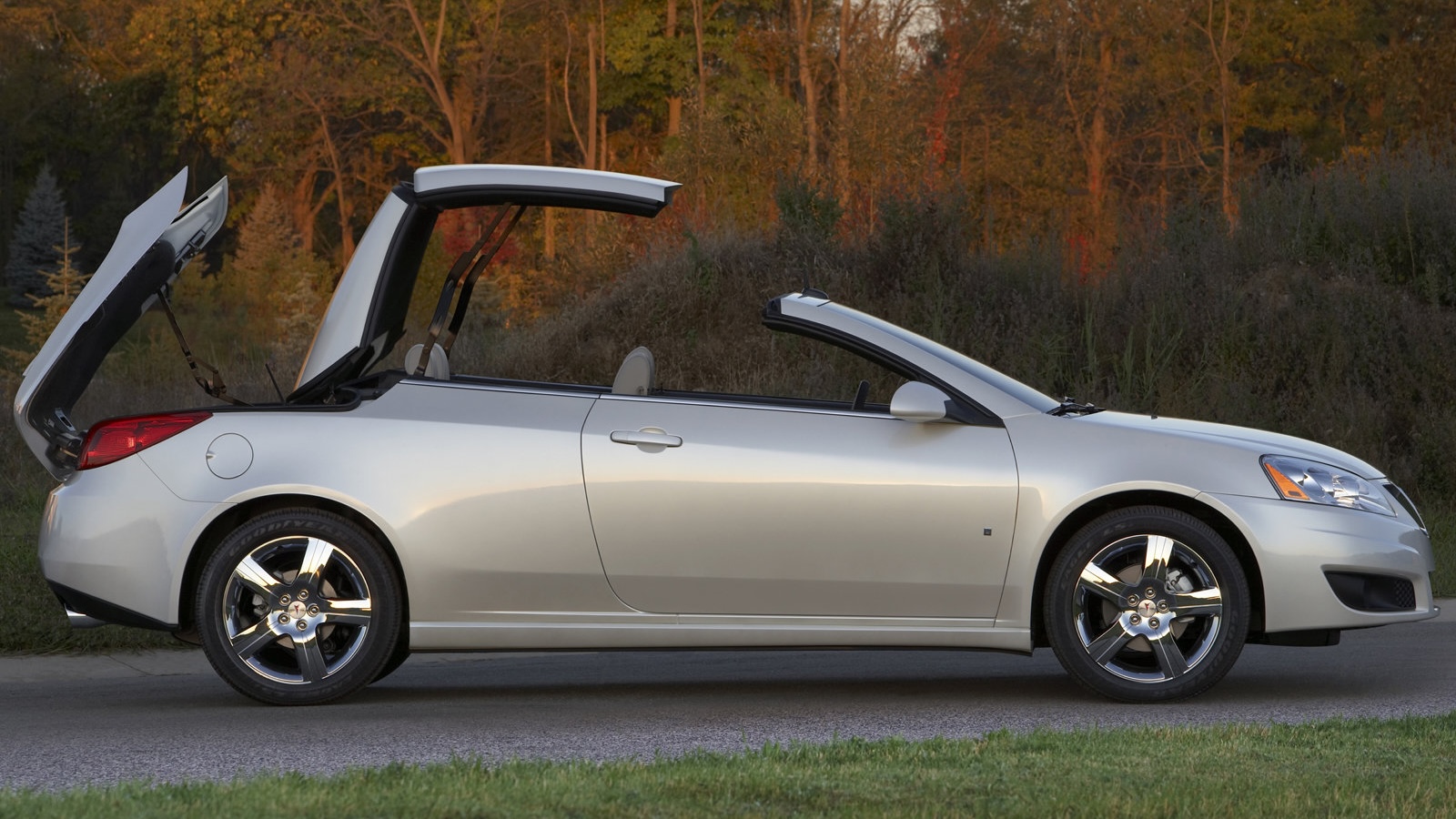
In an attempt to make things a little bit better, Karmann re-worked the hardtop to reduce noise shortly before a production shutdown for the 2007 to 2008 holiday season. As Ward’s Auto reported:
Sources tell Ward’s the auto maker’s supplier, Karmann GmbH subsidiary Karmann USA, made the fix late last year and GM shipped several units with a more robust retractable top to dealers. The fix focused on a panel-to-panel latch on the 2-piece clamshell lid, which folds into the trunk.
GM is “perfectly happy with where it’s at now,” the source tells Ward’s. “The fix virtually eliminates the squeak-and-rattle issues.”
However, just a few months after the updated hardtop assembly was introduced to the G6 Convertible, General Motors ran into a teeny-tiny, itty-bitty, minuscule, really a footnote of a setback called, um, starting to run out of cash. The General had been totting up losses in the billions for years prior, and by late 2008, executives were flying to Washington seeking government funding to keep going. A proposal for a sustainable path forward and a bridge loan came and went, and by June 2009, General Motors filed for Chapter 11 bankruptcy protection. The resulting bailout and restructuring would see an end to the entire Pontiac brand, along with Hummer and Saturn. Saab would be sold, but this meant the Pontiac G6 Convertible was dead by the end of the 2009 model year. Just over three years of production, an engineering effort that seemed to bite off more than it could chew at the start, and that’s all she wrote.
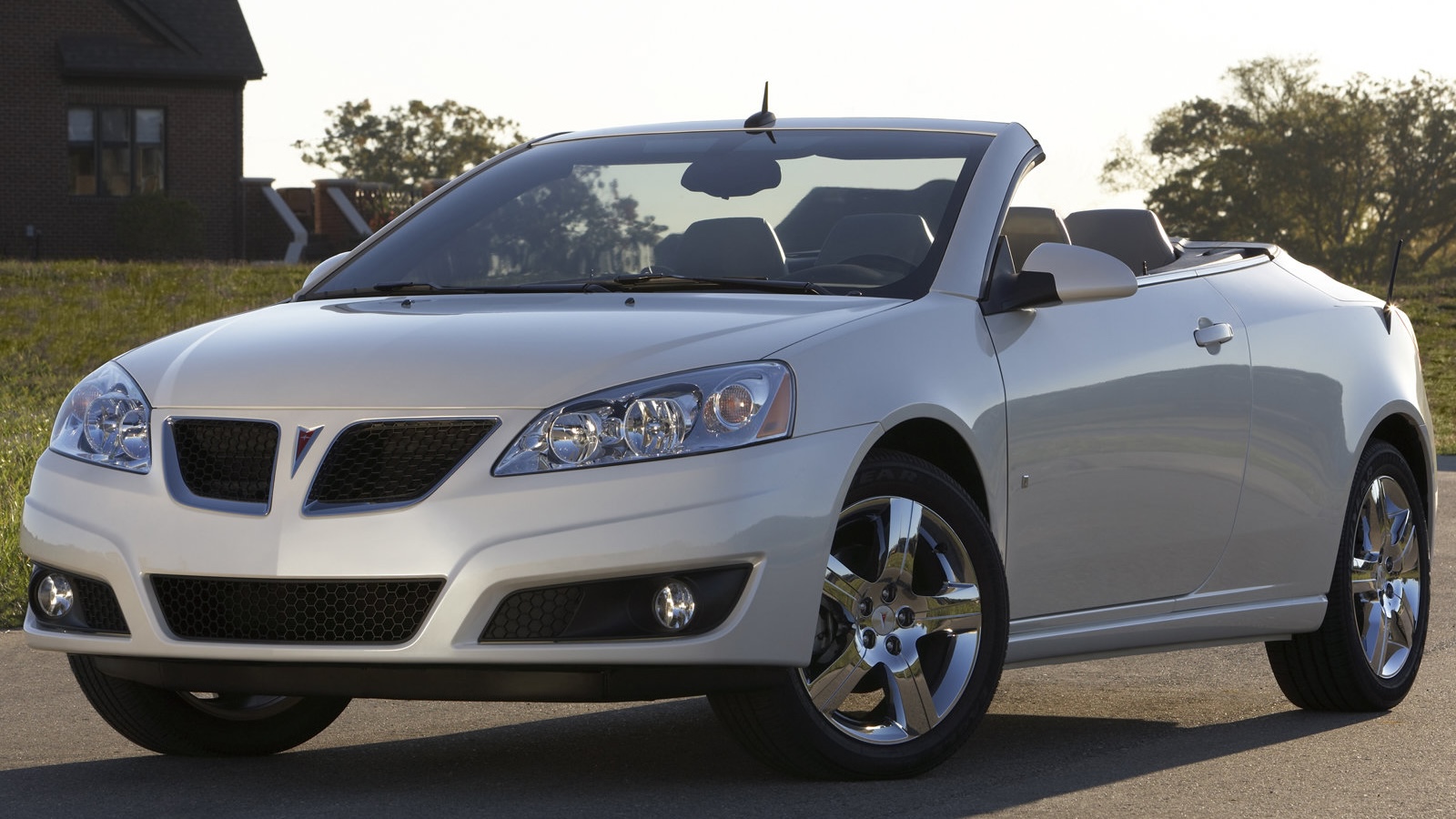
As these power-retractable hardtops aged, it didn’t take a rocket surgeon to realize that a roof with eight microswitches, five hydraulic cylinders, and 13 unique diagnostic trouble codes would become a known problem child, and pages and pages of threads at the G6 Owners Club forum attest to the car’s retractable hardtop problems. Over time, a wide variety of parts for the convertible top including sensors, trim pieces, latches, and glass have been discontinued, making this a real orphan of a car.
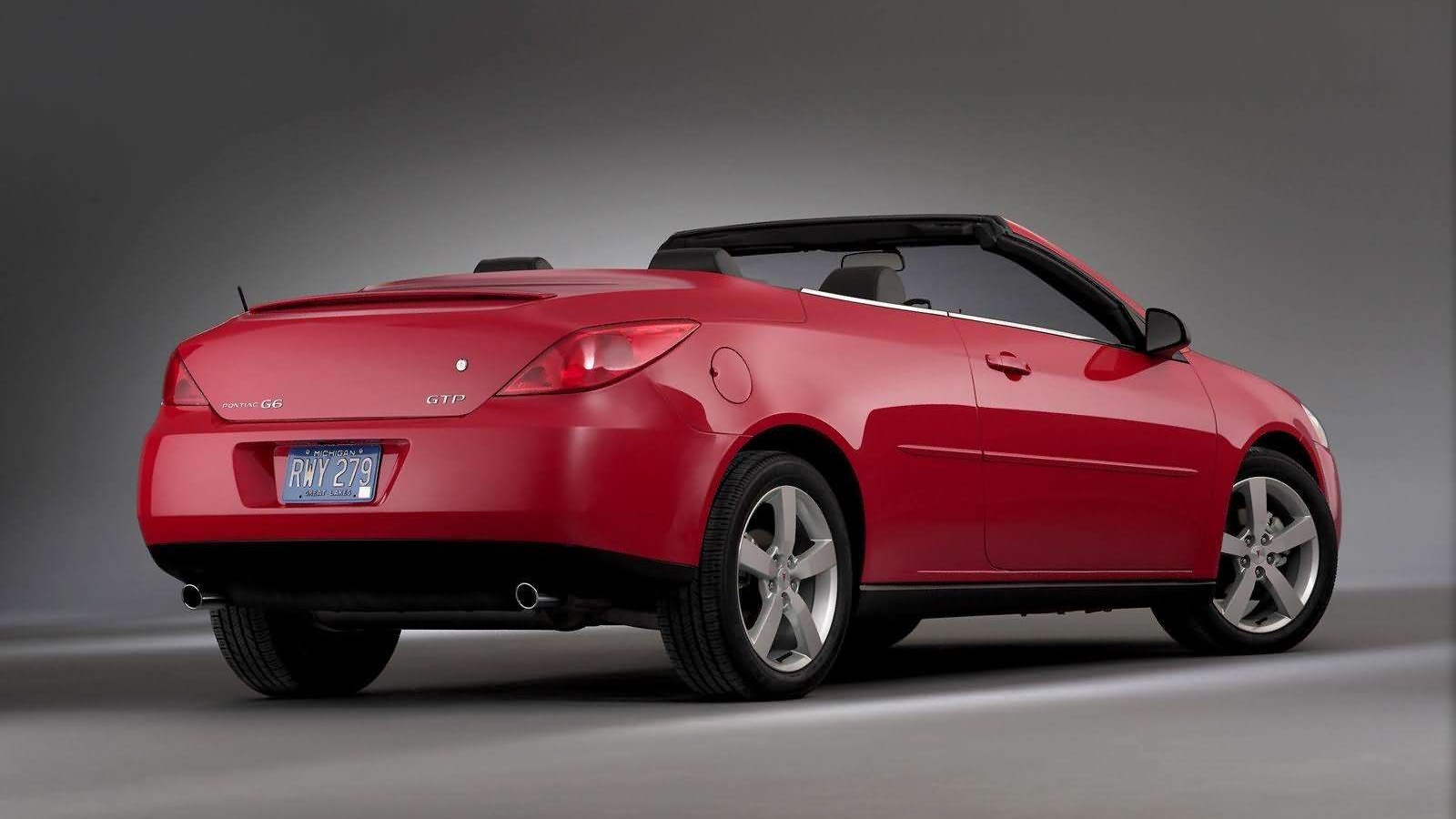
So, even though the Pontiac G6 Convertible might look somewhat attractive as a cheap top-down biff-about, this power-retractable hardtop is probably one to avoid. Early ones had noise, vibration, and harshness teething issues, all of them have parts availability problems, and at the end of the day, it’s not the only cheap four-seat convertible out there on the secondhand market. General Motors definitely took a big swing with this thing, but success with niche two-seat hardtop convertibles like the Chevrolet SSR and Cadillac XLR didn’t translate to a seamless launch of longevity in the four-seat hardtop convertible arena. In that regard, the G6 Convertible is a miss with a lot of gumption.
Top graphic image: Pontiac
Support our mission of championing car culture by becoming an Official Autopian Member.

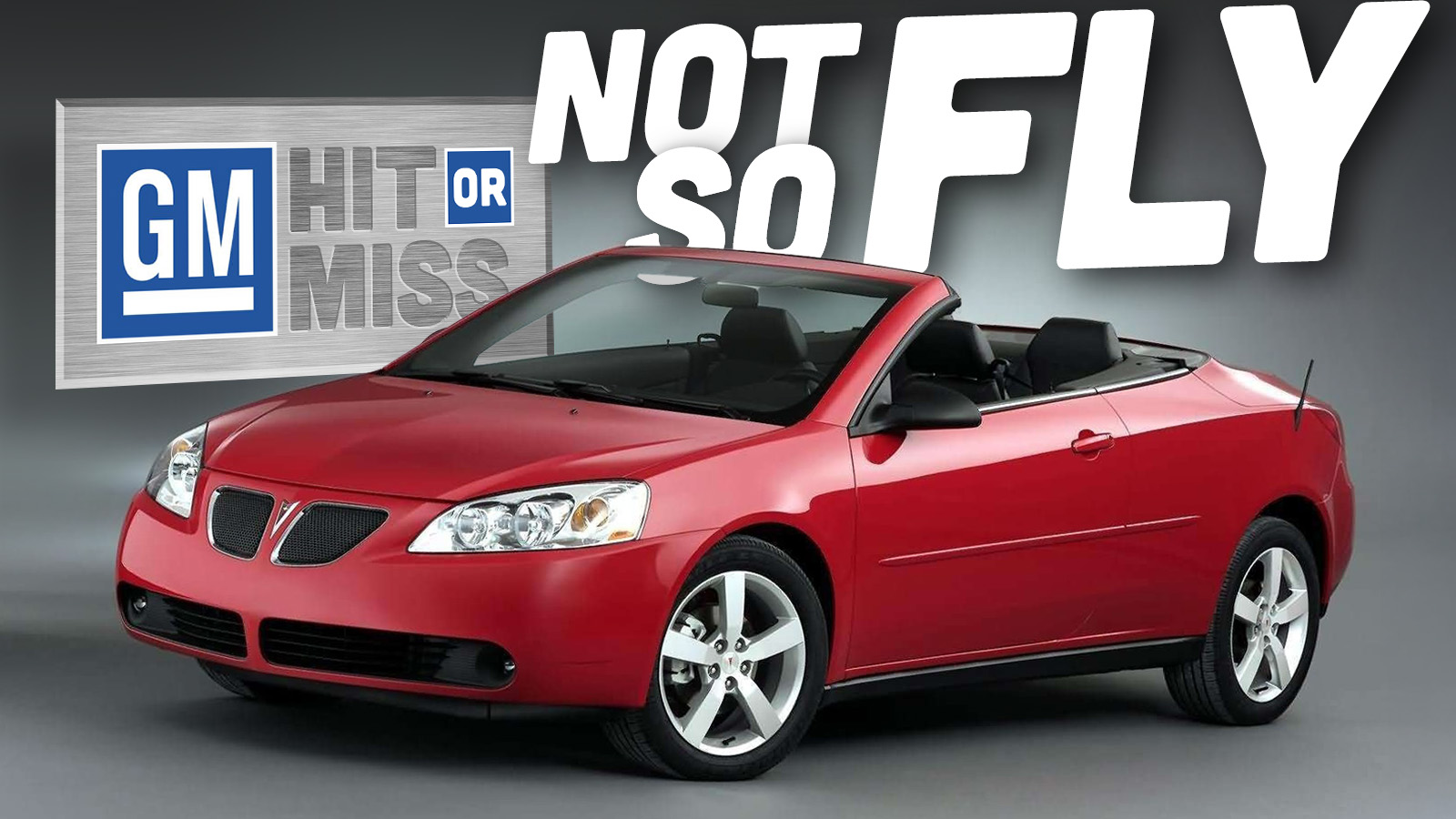






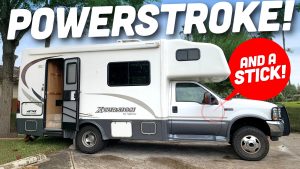
Two of my friends in college had G6’s, and I thought they were decently nice at the time for a newish, college-age kid car.
The thing about them that still stands out to me is that BOTH of them had the issue of the brake lights being on all the time, until you pressed the brake pedal… I have seen quite a few on the roads since that have the same exact issue. Pretty telling of GM quality of the time.
Has there ever seen a good convertible that did not start out as a convertible. The converted sedan/coupes always come out half baked.
I owned a 2007 G6 GT Street Edition without the huge and stupid looking rear spoiler. I genuinely loved that car. I’ve had 3 Pontiacs in my life and loved them all. I seriously miss the red cluster backlighting. I never wanted this convertible but I did find it interesting it was hard top in a relatively cheap car.
I actually still see some of these around my area – and an example in that same red lives not too far away. I’ll admit I’ve grown to like the styling of those last Pontiac years
This may be the one time when the right answer is Chrysler Sebring. Nah, never mind. Toyota Solara is still a better choice.
Had a rental Solara of that era once. It was so boring I damn near fell asleep driving it. At the time, that was a criticism. In retrospect, a ride that comfortable and smooth sounds pretty good.
I remember some car magazine describing the Solara as “a convertible for someone who has never bought a set of high-performance tires”
This is just another reason why I like moonroofs and not convertibles. An open moonroof and windows is nearly as breezy as a convertible, but not quite as prone to skin cancer.
And you’re not driving a Flexible Flyer.
In the cheap-somewhat-midsized hardtop convertible hierarchy, these are still above the Eos and way above the Sebring.
I always liked to think that Far East Movement’s “(Party) Like a G6” was about this car.
You mean it’s not???
I am amazed how many people actually think this lol
Thanks for this Thomas, it was interesting.
I admit to being fuzzy on most near-end-of-brand Pontiac models… I know there are some that start with “G” and I vaguely recall seeing some mostly anonymous looking GM sedans at some point, but that’s about it.
However, this article prompted me to go look at G6es, and I gotta say, the coupe version (with the regular hardtop) isn’t awful… in fact, it’s almost actually nice. I’m not a fan of the Pontiac grill, nor of most of the factory wheels from around then, but the two-door car has decent coupe proportions… better IMO than the Honda Accord coupe from around that time, which had a big ass high up in the air.
The G6 convertible is handsome (I think it looks better than Volkswagen’s Eos) but of course I’d never want a convertible with a floppy body, and I’d prefer to avoid one with the complexity of a folding hardtop, unless it was renowned for good build quality.
I’ve had a few convertibles thus far: ’69 Stingray, ’81ish Rabbit, a pair of Miatas (a NB then my current NA) and to the best of my recollection, none flexed or rattled that much. The Corvette definitely wasn’t water-tight though, and anyone with a skinny arm (like my 20-year-old self) could break in by forcing their hand between the top and the window glass.
If it isn’t a rag top it isn’t a convertible it’s a coupe with a poorly attached roof. I stand by this statement. I mean complaining about the noise in a convertible is like complaining about the engine noise from a V-12 as you roar down the road at 90 mph.
One of my friends had one of these in college and it was considered fairly cool at the time by all of us 18-22 year olds. I have fond memories of stuffing a sizable chunk of our crew in it and rolling around town with the top down. Thinking about them gives me a wee pang of nostalgia and reminds me of simpler times, so they’ll always be okay in my book. Anyway the owner was rad and she was good friend. She clearly had better things to do than roll around with a bunch of shitheads but she humored us anyway.
I have wee pangs all the time. 🙂 And bless all gals that humor us. 🙂
I feel the same way about Pontiac Sunfires, my best friend had one in high school/when I was in college and we had a lot of good times in that car. And she’s still my best friend!
I had to look up the 2004 Malibu and oof, thats why I forgot about it.
Did GM end up repurposing these at the Buick Cascada after Pontiac folded?
Yes, in addition to its other demerits, that Malibu stakes a solid claim as one of the uglier vehicles ever made.
Nah, the Cascada came much later and is a repurposed Opel. Oddly enough, I think its closest platform cousin in the U.S. market is the Cadillac ELR.
Hey now, we almost got a wagon with the Malibu Maxx! Almost…
The Maxx was one ugly vehicle. Never did get the appeal of that thing.
I remember a friend who had one in college. I thought that the rear sunroof was the coolest thing ever. Thats about my only lasting thought on their existence.
I shouldn’t have googled it
Get yourself a proper drop top: the Geo Metro convertible.
Or a Geo Tracker convertible!
Or be conservative and get a Suzuki X90 with the T-top panels.
I support that one!
I saw a one the other day. It was a 5 speed and it was magenta. Magnificent!
I have one, a 2008. It’s got about 130k miles on it, and about the only thing wrong with it is the crappy aftermarket stereo/navigation system that a previous owner had installed. The top still works fine, the drivetrain (3.9 V6 auto) still works fine. The only other annoyance was the rear view mirror fell off and took 3 tries to get it to stick back up.
🙂 I’m actually glad to hear it. It’s hard to remember that sometimes a person’s experience with a car can be positive, even if there’s nothing about its rep or specs that would suggest that’s likely. 130Kmiles is a decent chunk of miles, and if the drivetrain and top are both still working well, you definitely got your money’s worth.
I had one ambitiously turn across the road in front of me, resulting in my perfectly good Mazda5 being totaled. Without going into detail, they were 100% at fault and I had no options to avoid them. I am still bitter about it.
I liked them, still would rather have the hardtop convertible over a Rag again. the biggest issues I had witht hem, beside the end of the run orphan quality, was the AFM as well as VVT 3.9 V6’s. They were more likely to kill the car off than anything else. I think the VVT only 3.5 was perhaps a bit better, but neither were the tried and true 3.8.
I don’t think the G6 (or the Malibu) had AFM with the 3.9, maybe only the Impala had it. They did offer the 3.5 on the convertible but don’t know what the production mix would have been.
Never got the DOHC 3.6 like the sedan/coupe though which likely would have really doomed it.
GM’s disparate and redundant V6 engine families were part of the problem. Not that Chrysler didn’t have just as many, if not more.
As it was, I don’t think GM installed the 3.8-liter in any of the Epsilon cars; they were only in the W- and G-bodies, which were positioned as senior to the Epsilons.
BTW the GTP versions of these (sedan, coupe and convertible) had 240hp and came in manual. Sounds like it could be fun
Convertibles never offered the manual IIRC.
It seemed like it came and went from the options list very quickly, but that may have been from poor reviews of the transmission. Might be more novel than really enjoyable.
I had a copy of the F40 transmission in a 9-3. It was just okay. 1-2 shifts were awful, even my Saab specialist couldn’t get it adjusted right. It’s part of the reason I sold the car far earlier than I wanted. Upper gears were fine and the overdrive ratio was excellent for the highway but this was not a very smooth transmission.
I had an ’08 6spd 9-3 SportCombi that had the 1-2 shifting issue. Eventually there was a TSB to overfill the gearbox by .5L – that solved it.
But it was still a fairly agricultural box. Friend of mine bought it from me, and another friend bought it from her and still has it – almost 300K on it now. The only new Saab I ever bought.
I remember test driving a G6 Coupe Manual when brand new (I really wanted to buy one when I was younger), and the test drive put me off them for good. The manual was a grindy, clunky, clumsy mess. It had 8(!) miles on it. The reviews of the manual being terrible were not exaggerations.
I can understand if this was said post production how you could poke at it, but if in pre-production, if nothing goes wrong here are your options:
You’re not paying attention, and it will lead to post production issuesYou’re not trying anything new… at allYou’re looking at the wrong things, see 1It’s being built so simply you probably didn’t have to hire engineers (no, not simplicity that’s been engineered, I mean it’s a cardboard box)
I know you were trying to dunk on this guy from 20 years ago, but he’s right, and there isn’t any shame in what he’s saying. Even the manufacturing “god” that is Toyota would absolutely tell you the same thing in manufacturing development.
I feel like we’re saying the same thing. The “dunk” isn’t that snags happen. Snags on a project are normal, but using that excuse to dismiss being months late on job one and still pushing out a product that didn’t seem finished from a QC perspective just isn’t a good look.
Or you could do a Ford and push it out with the problems and lead the auto manufacturers world in every model ever has recalls during the first year.
So true! 😀
Remove the top and its associated hardware, buy a car cover or garage it, and only drive it on sunny days. Problem solved.
I vaguely remember these growing up in the Midwest. It’s a shame that they’re orphan parts cars, it would be cool to have the last Pontiac convertible
I believe I’d rather have the 1955 Pontiac Star Chief Convertible that Lucy, Ricky, Ethel and Fred drove to Hollywood.
Both, I want both
[deleted, posted in wrong area]
until the AFM and VVT resulted in engine stumbling and rough idle. But Still I agree with the sentiment.
I don’t know that I’ve ever seen one – but since it looks like a Toyota Solara from the rear….
I was thinking the same thing, I’d rather have the Solara.
I dig Solaras myownself. Never had one, but tempted quite a few times. I know it’s just a weird looking two-door Camry, but I’m fine with that. The interior on the second gen (I dunno which trim(s)) was nice… the dash always struck me as more than a little Lexus-like. 🙂
I had an ‘04 Solara, black with tan interior – had so much fun In that car with the top down on warm Louisiana nights, until I got T-boned in Uptown New Orleans post-Katrina. Ugh.
still plenty of them out there, probably because of the convertible status. This one even qualifies for the beater daily showdown I think. https://www.ebay.com/itm/376540980559?hash=item57ab97654f%3Ag%3A8%7EIAAeSwDSpowbkP&mkevt=1&mkcid=1&mkrid=711-53200-19255-0&campid=5337650957&customid=&toolid=10049
201K miles.
Slipping transmission
Always parked outside
It was absolutely a Solara Convertible competitor.
I feel like Avis must have bought most of them. Rental car agencies love cheap convertibles because they rent at a huge premium.